Last updated on April 11th, 2023
Guatemala, officially the Republic of Guatemala, has an area of 108,889 sq km. It is a country in Central America. Its capital and largest city is Nueva Guatemala de la Asunción, also known as Guatemala City. People living in Guatemala are called Guatemalan. Spanish is the official language of Guatemala. Quetzal (GTQ) is its currency. It has four bordering countries that include Belize, El Salvador, Honduras, and Mexico. Guatemala is well-known for its awe-inspiring treasures. With these facts about Guatemala, let us explore its history, culture, food, volcanoes, geography, economy, trade and more.
Interesting facts about Guatemala
1. Guatemala became independent in 1821. Other countries that became independent during the same year include El Salvador, Honduras, Nicaragua, and Costa Rica. All these countries gained their independence from Spain.
2. The national anthem of Guatemala was not written by a Guatemalan, but by a Cuban – José Joaquín Palma. However, it was composed by Rafael Álvarez Ovalle.
3. The Quetzal is the national bird, and White Nun Orchid (Monja Blanca) is the national flower of Guatemala.
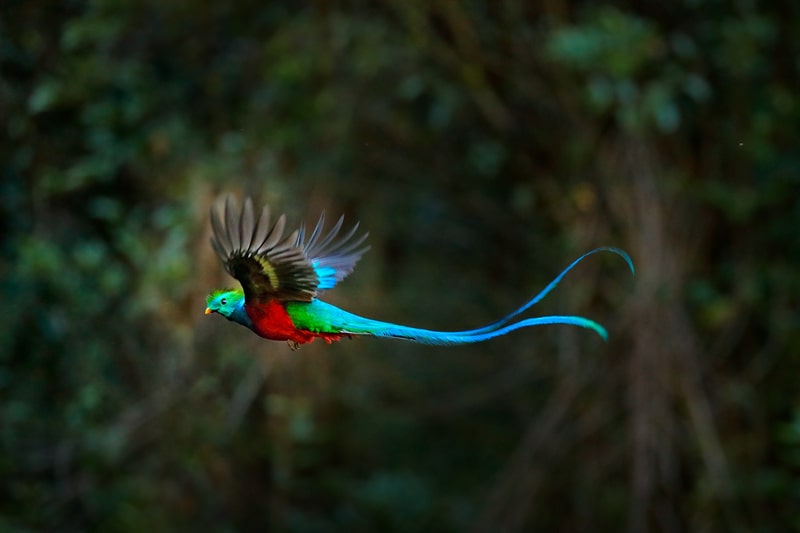
4. There are 22 Mayan languages (a language family spoken in Mesoamerica and northern Central America by at least 6 million Maya peoples) spoken in Guatemala. However, Spanish is their official language.
5. The currency of Guatemala—Guatemalan Quetzal—is named after the beautiful Quetzal bird. In ancient Mayan times, the feathers of this bird were used as currency.
6. One interesting fact about Guatemala is that Blue denim comes from the country!
7. The instant coffee process was invented in Guatemala by George Washington, an inventor, and businessman of Anglo-Belgian origin.
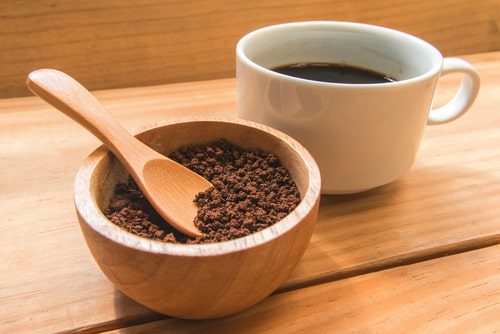
8. Do you like chocolate bars? The first ever chocolate bar was also invented in Guatemala during the Mayan times.
9. Chocolate residue dating back to 460-480 AD was found in a vessel in Guatemala.
10. The country has the second-largest concentration of Ozone. Ozone is a gas which is available both in the Earth’s upper atmosphere (stratosphere) and at ground level (troposphere).
11. Guatemala was conquered by Spanish conquistador Pedro de Alvarado in 1524.
12. The longest civil war in the history of Latin America, which was fought between military governments, right-wing vigilante groups and leftist rebels lasted a good 36 years.
13. By the end of the civil war, 200,000 citizens were dead.
14. Nueva Guatemala de la Asunción, which is also the largest and capital city of Guatemala, is known as Guatemala City.
15. Guatemala is known for its steep volcanoes, vast rainforests, and ancient Mayan sites.
16. Miguel Ángel Asturias Rosales (October 19, 1899 – June 9, 1974) was a Nobel Prize-winning Guatemalan poet-diplomat, novelist, playwright and journalist.
17. Guatemala has one of the highest violent crime rates in Latin America. The country saw 6,000 violent deaths in 2014. And an average of 101 murders per week were reported in 2016. For a detailed report on crime in the country, as well as some safety tips, read this page.
18. Many believe that the name Guatemala comes from Guhatezmalh, which described the volcano near Antigua. Now the volcano is simply called Volcan de Agua, which translates to the “Volcano of Water.” The volcano serves as the perfect landmark as it can be seen from every direction. Its name came from a terrible mudflow that happened on September 11 in 1541. The occurrence devastated the country’s first capital city, Ciudad Vieja. Following this, a new capital was built and named Antigua.
Guatemala on map
19. The Guatemala Housing Alliance states that the country has a population of approximately 17,580,000 and is roughly the size of Tennessee. The area is broken down into 22 distinct departments. The Mayan communities within the population mostly reside in highland villages that provide tropical weather, which is ideal for growing coffee and fruit.
20. Motagua River is the longest river in Guatemala. It measures approximately 250 miles. The river is a major transportation artery for coffee, bananas and other fruits that are raised in the valleys of the country’s eastern region.
21. Guatemala’s Lake Atitlán is the deepest lake in Central America, with a maximum depth of about 340 meters. It is also regarded as the most beautiful lake in the world, serving as the country’s most important national and international tourist attraction.
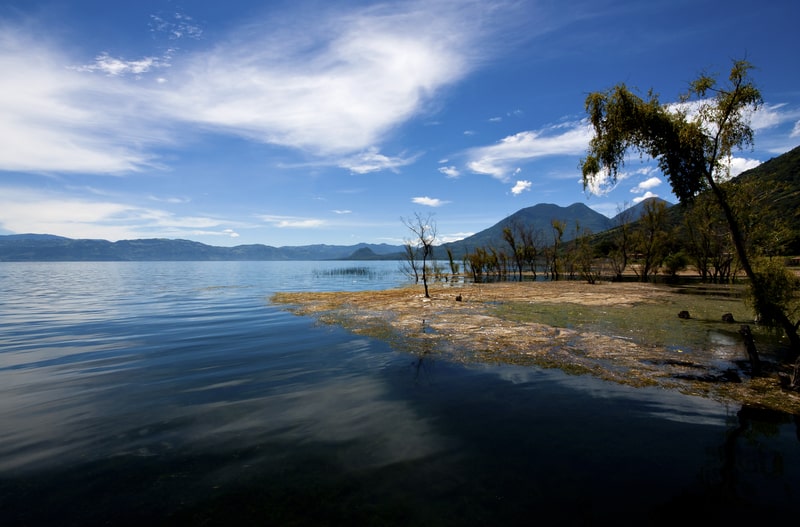
The beauty of the lake was praised by two prominent people in history: one being the German explorer and naturalist Alexander von Humboldt, and the other being Aldous Huxley.
22. Guatemala is part of the ring of fire: the Pacific Ring of Fire is an area resembling a horseshoe that runs about 40,000 kilometers around the Pacific Ocean. Guatemala sits within this ring. This area is specific because it sits on tectonic plates that collide with other continental plates, causing constant seismic tremors.
23. Guatemala means “land of many trees”: he Convention on Biological Diversity states that Guatemala is from “Quauhtlemallan” which means “the land of many trees”. According to CBD, the country is riddled with forests that take up about 37% of it. Unfortunately, the country has been losing its forests at an alarming rate in the past few decades.
24. It has been inhabited for 20,000 years: the first conquistadors from Spain that arrived there thought they were the first to find out about Guatemala. However, they were not the first humans to step foot on that land. The country had been inhabited by several Mayan kingdoms long before the Spanish arrived. Today, thousands of archaeological sites remain in Guatemala to provide proof of these early civilizations.
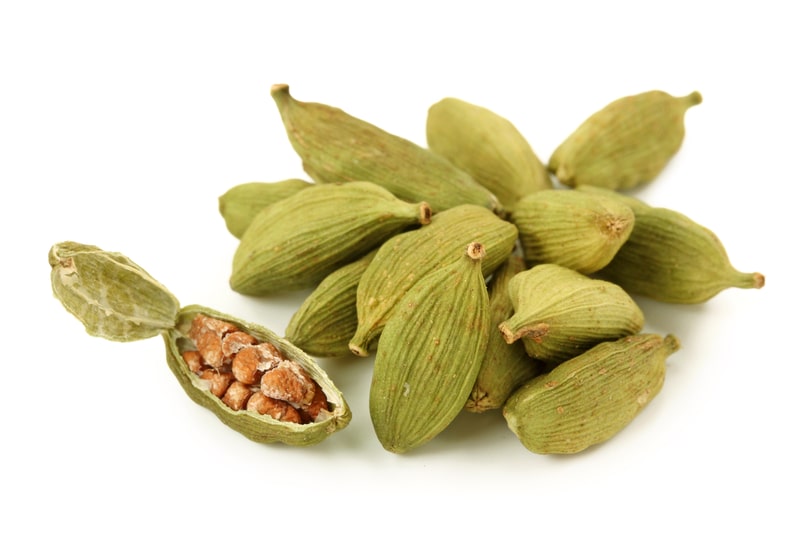
25. Guatemala is the world’s largest exporter of cardamom: according to Royal Spices, they export about 2,000 to 2,500 metric tons of cardamom each year. These massive amounts are distributed to different countries, depending on demand, and contain various grades of cardamom. Grades include intense green, pale green, mix green, and mix yellow.
26. Tajumulco Volcano, the highest point in the country and Central America, is 4203 m above sea level. The Smithsonian Institution admits that it is unknown when the volcano’s last known eruption occurred. Despite some reports of past eruptions, many were thought to be just rock avalanches rather than eruptions and were never officially confirmed.
Volcanoes in Guatemala
27. There are more than 30 volcanoes in Guatemala: according to the Smithsonian Institution, there are 37 volcanoes in Guatemala. 23 volcanoes are classified as holocene because they were active at some point within 11,700 years. The remaining 14 volcanoes are pleistocene, which means they were last active between 2.5 million years and 11,700 years ago.
28. Suchitan, Ixtepeque, Acatenango, Atitlan, Moyuta, Agua, Cerro Santiago, Tajumulco, Chingo, Quezaltepeque, Chiquimula, Cuilapa-Barbarena, Flores, Fuego, Ipala Volc Field, Santa Maria, Almolonga, Santo Tomas, Tahual, Pacaya, Tecuamburro and Toliman are the names of some of the volcanoes from the region.
Flag of Guatemala
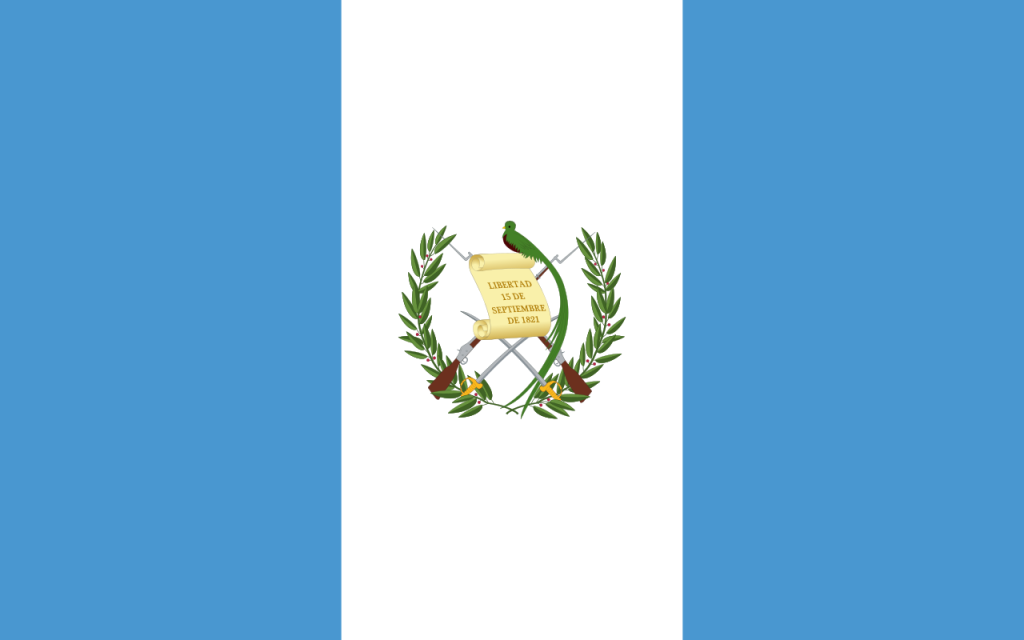
Facts about trade, tourism, and economy
29. The export of coffee is the country’s biggest business. Almost 50% of Guatemalans are employed in agricultural activities.
30. Tourism is the second-largest industry in the country, employing approximately 35% of its population.
31. Guatemala City is the industrial and commercial center of the country, employing the remaining 15% of the population.
32. The unequal distribution of land and wealth in the country is the biggest reason for uneven development in the region.
33. The country is also the world’s leading producer of Jade.
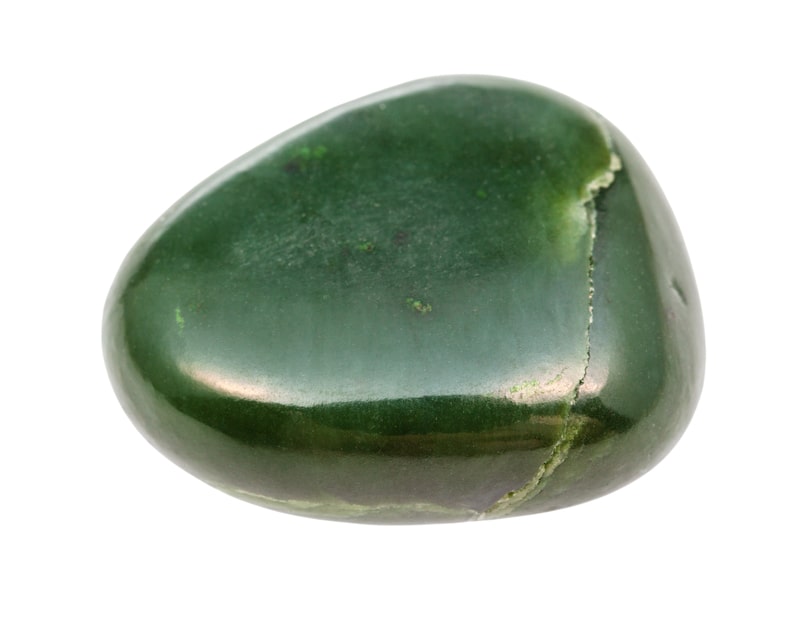
34. Fourteen percent (14%) of Guatemalans live on less than $1.25 US a day.
35. Guatemala is the top remittance recipient in Central America as a result of Guatemala’s large expatriate community in the US.
36. There are three UNESCO World Heritage Sites in Guatemala. These sites include Antigua Guatemala, Tikal national Park, Archaeological Park and Ruins of Quirigua.
37. Tikal National Park is the world’s first mixed UNESCO World Heritage Site.
38. More than 1.2 million people visit Guatemala every year.
39. If you are interested in seeing the lava flow, you may want to visit the Pacaya volcano. Visitors flock to this site to take glimpses of the red-hot lava.
Facts about the culture of Guatemala
On a trip to the country, a traveler learns about the strong cultural heritage of Guatemalans which blends indigenous European, Mayan and Caribbean influences.
Additionally, the contrast between the poor Mayan villagers living in the rural highlands and the modern and wealthy mestizos population (known as ladinos in Guatemala) living in surrounding agricultural plains and cities is what defines the culture of Guatemala.
40. Language: the official language of Guatemala is Spanish. Additionally, while twenty- two Mayan languages are widely spoken throughout the highlands, Xinca, Arawakan and two non-Mayan Amerindian languages are spoken on the Caribbean coast.
41. Religion: Roman Catholicism is the dominant religion in Guatemala followed by nearly 50% of the country’s population. However, Evangelical Protestantism and later Orthodoxy have become popular in the recent decade. The Oriental Orthodoxy and the Eastern Orthodox Church claim rapid growth, especially in the native Maya people.
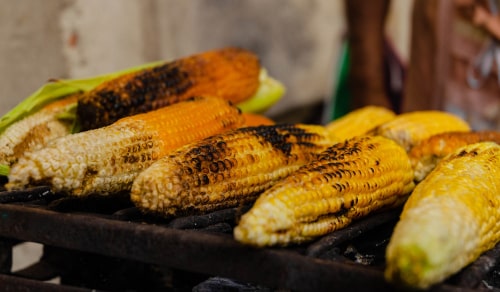
42. Cuisine: Guatemala cuisine is primarily based on Mayan and Spanish cuisine and prominently includes beans, corn, and chilies as key ingredients in their food recipes. Pachas (a kind of tamale made from potatoes) is a common dish in Guatemala eaten usually on Thursdays.
43. Beverages: locals in Guatemala prefer to drink coffee weak and sweet with little milk. Apart from drinking fruit juices, Guatemalans also love drinking fruit shakes, commonly referred as “licuados”. The national beer of Guatemala is Gallo.
44. Clothes: the Mayan people are known to wear bright colored shirts, blouses, dresses, and capes. Each village has its own individualist pattern, making it easy to identify the village of the person by the design of his or her clothes. While traditional clothing is worn often by the poorer Guatemalans, Ladinos prefer wearing western- style outfits.
45. Family life: families in Guatemala share a close bond with each other and remain that way their entire lives. The typical rural family of Guatemala is hard – working. While men work in the fields, women raise their children and weave beautiful textiles with motifs that are unique to each community.
46. Music: the music of Guatemala is diverse and includes several styles and expressions. While the Garifuna people of the Afro-Caribbean descent have their own varieties of folk music, lower classes enjoy the Cumbia, a dance oriented music genre. Marimba is the national instrument of Guatemala.
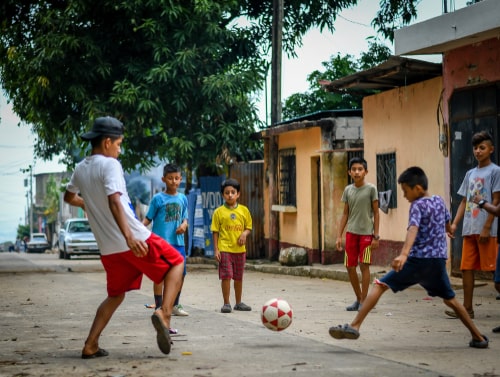
47. Sports: one of the most popular sports in Guatemala is football (soccer). In addition, Guatemalans also enjoy an activity known as Spelunking where they go and explore the caves. Outdoor sports such as rafting, white- water rafting; kayaking and volcano climbing are also preferred.
48. Traditional Dance: Guatemala is famous for its traditional dances. Performed at fiestas in honor of the local saint, these dances are musical dramas which recall historical events through the use of masks and costumes. While the dance of conquest evokes the victory of Spanish over the Amerindians, the deer dance represents the struggle between humans and animals.
49. Crafts and Hobbies: the intricate designs and brilliant colors used in raw cloth, as well as finished garments, make Guatemala’s hand-spun and woven textiles one of the finest in the world. Although cotton, silk, and wool are traditional fibers for clothing, they are also used to make rugs and blankets. Mats, baskets, hats, and baskets are also made by Highland Amerindians using different types of cane and fibers from maguey cactus.
50. Communication: while the Maya adults greet each other verbally, asking about one’s health and family, Latino adults greeting and farewells call for embraces, handshakes, arm or shoulder patting and even cheek kissing almost from the first acquaintance.
51. Taboos: if you put your thumb in between your index and middle finger while making a fist, it is considered an obscene gesture. Similarly, speaking loudly in public is looked down upon.
52. Marriages: marriages in Guatemalan society is celebrated in a civil ceremony, followed by a religious rite. Among the poor classes of both the Ladino and Mayan, unions are free and ties are brittle. As a result, many children are unaware nor are recognized by their father. Although Monogamy is a rule, many men have a wife as well as a mistress.
53. Welcoming a new born: as soon as a baby is born, hot tortilla drink is given to the mother. It is believed that drinking hot tortilla helps provide abundant, good and rich breast milk. A red bracelet is put on the baby’s right hand to protect her from bad spirited people.
54. Giving gifts: gifts can be given in a business setting, but are not usually entertained in the first meeting. If invited to a household in Guatemala, it is appropriate to bring chocolates, wine or flowers (avoid taking white flowers as they are generally brought to funerals). Avoid giving easily breakable gifts.
55. Events: events such as the ‘Semana Santa’ Easter celebrations, All – Saints – Day, the election of Maya princess ‘Rabin Ajau’ in Copán and the ‘Palo Volador’ are some of the events that represent Guatemala culture. In addition, every village celebrates the day of their Patron Saint, where cultural activities such as a presentation of crafts, processions and folkloric dances take place.
56. Dining Etiquettes: when invited to a Guatemala household for dinner, carry a small gift item (avoid food items) for the family. Before starting a meal, it is a custom in Guatemala to say to everyone “Buen provecho” (enjoy your meal). Similarly, before getting from the table after having the meal, you must say “Con permiso, ya vengo”(with your permission, I’ll be right back).
. . . continue reading on the next page
